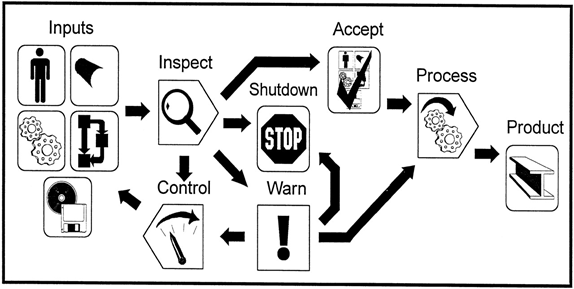Is your retail buying office falling behind with quality assurance procedures that should be taken on as best practice?
In this part one blog post, we delve into the reasons why your retail buying office could be falling behind, and not adopting the best practice quality assurance procedures that will keep your brand competing in the global market place.
The goal of quality assurance (QA) used to be simple; make sure that a product performs the way it is supposed to.
Over time the goal has evolved, from simple post production judgments to a multi-step process that begins with management defining outcomes all the way to distribution. This evolution is ongoing, and it has seen the adoption of QA within modern companies become almost ubiquitous – from mortgage lenders to software developers, to engineering firms.
QA is vital to success!
To keep your business competitive in a fast-paced world, you need to make sure that you’re keeping up with the best practices for QA. Best practices are clear processes integrated into every facet of product design, development, and implementation, which ensure the highest chance of achieving your objectives.
Now you know about QA, and you want the best practices. We’re here to help.
Acknowledge your weaknesses. While this may be difficult to do, there is immense value in spending the time analysing this.
Here are five reasons why your buying office could be falling behind, and not adopting the best practices for QA that will keep you competing in the global market:

With QA being an increasingly integrative process, as opposed to final product inspection, it has become important to realize that QA has become a team effort.
The responsibility here begins with senior management
The staff that management chooses to carry out QA reflects how seriously management considers that role. This choice is important because QA staff need to have relevant experience to meet the objectives and closely follow the processes required by management.
This part may seem obvious, but what is critical is that the staff need to be able to work with senior management.
Mutual respect is key
A fully functioning QA team needs an open, responsive channel with senior management in order to perform their jobs properly. You do not want to be put in a position where there is a lack of communication from management, and subsequently, have the QA team blamed for not having the perspective of what they are required to do.
Alternatively, you also do not want the QA team struggling to resolve an issue because they cannot communicate with senior management about it. The role of a QA team is critical for the product success, so make sure that it is staffed with respected people that can be approached and worked with.
Other than QA staff choice, it is also key to have early involvement of the suppliers, designers, developers, consumers, and any other party involved in the process.
The more interaction there is with suppliers, the more close monitoring there can be of the quality of the material and products.
Involvement of designers and developers will minimize later conflict on what is expected and what is possible. And the involvement of potential consumers is critical to assess the projected profitability of the product.
This will all allow an efficient QA process, which minimizes the need for final-stage inspections/testing that could be costly or find issues that are difficult to rectify at that late stage. It also allows for early termination of unprofitable enterprises, without the massive financial losses that would come from realizing that post production/purchase.

Figure 1. Involving all relevant parties in the process early on will allow for inspections of the design, production protocol, and consumer interest before the product is actually manufactured. This will allow for integrated QA, reducing the need for post-production and final stage inspection/testing, and in some cases for the timely shutdown of unprofitable projects (Adapted from Hinckley 1997).

Involving more people in the QA process from conceptualisation to purchase raises the next important step toward improving QA.
For QA to function properly it is critical to clearly define the objectives.
Remember that with any product there will be trade-offs between the target quality, release date, budget, and consumer satisfaction. The relative importance of each of these factors is situational and needs to be decided on and formalized in detail.
An overarching, vague goal for QA such as “Achieve greater QA” can be difficult to attain if the QA personnel are not provided with clear objectives that deal with trade-offs. If you’re prepared to sacrifice time for higher quality, make this clear in the objectives so that the QA inspectors know what to prioritize.
Clarity is paramount.
When defining objectives, remember not to assume. The more detailed the objectives are, the easier they are to follow. With that said, beware of removing all autonomy from the QA process, because this will undermine the role of those carrying it out. Strike a balance that is clearly understood, but leaves maneuverability for the staff to know that their experience and skill is valued. In the same vein, make sure that everyone is on the same page as far as your set standards/benchmarks for quality go.
Keep the quality checks consistent, with well-defined checklists for each team unit in the process, which are not open to differential interpretation by the QA staff, the producers, and the buyers.
QA as a procedure has changed over the years to ensure there is success from production to distribution.
This is part one of a two part series on QA best practices and how they can empower you to help your company achieve the goals and objectives you set out to achieve.

Want to know more about one of our many services? Contact us to find out more information about what API can do for your company today.
Address
Copyright © 1981 – 2022 API. All Rights Reserved.